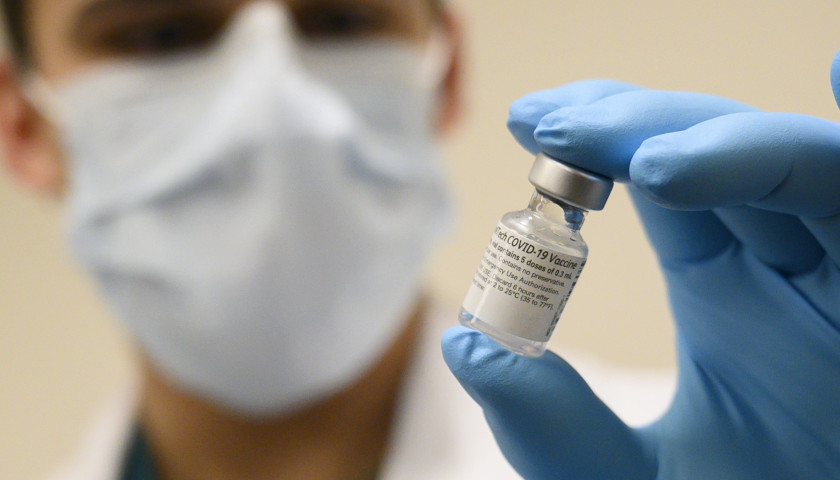by Jon Miltimore
In March, data guru Nate Silver wrote about the different ways blue states and red states were experiencing the COVID-19 epidemic, noting that “states Clinton won do have considerably more total reported cases.”
COVID-19 was not just a blue state problem though. Silver pointed out that cases in red states were increasing far more rapidly.
“Nine of the 10 states that have seen the most rapid increase in coronavirus from Monday to Thursday are states that voted for Trump in 2016,” Silver wrote.
Days later, The Atlantic published an article titled “The Coronavirus’s Unique Threat to the South.”
The article saw similar ominous signs for red states, particularly a “four-state arc of Louisiana, Mississippi, Alabama, and Georgia.”
Months later we have a more complete picture of the data, which shows blue states have borne the brunt of the COVID devastation.
Eleven of the 12 states (including the District of Columbia) with the highest COVID-19 fatality rates are traditional blue states. Leading the way, unsurprisingly, is New York, which posted the highest deaths, total (31,346) and per capita (1,611 per 1M).* New Jersey is not far behind New York, however (1,478/1M). These states are followed by Connecticut, Massachusetts, Rhode Island, and the District of Columbia. Just one red state—Louisiana, seventh highest with 680/1M—cracked the top twelve.
The question is, why?
After all, blue states tended to have the most stringent lockdowns. Indeed, eight red states—Arkansas, Iowa, Nebraska, North Dakota, South Dakota, Oklahoma, Utah and Wyoming—declined to issue stay-at-home orders at all (though some took less severe measures).
None of these states were among the states hardest hit by COVID-19.
The data could lend support to epidemiologists—John Ioannidis. Anders Tegnell, and others—who have expressed skepticism on the efficacy of lockdowns.
“Blind lockdown of entire populations has questionable added benefits,” Ioannidis, the C.F. Rehnborg Chair in Disease Prevention at Stanford University, recently wrote in the medical journal BMJ.
A second reason could stem from other policy decisions. Several states hardest hit by the coronavirus were among those that passed controversial policies that prohibited nursing homes from refusing to admit patients released from hospitals because they had the coronavirus.
Public health experts and trade association leaders had questioned the policies, noting older populations were the most at-risk and most nursing homes lack the resources to effectively quarantine COVID carriers. One 31-year-old health care worker told The New York Times the policy was “a sentence of death for all the older patients.”
The policy could explain why several states—New York, New Jersey, Michigan, and Pennsylvania, among them—experienced higher rates of fatality.
“The policy of sending recovering Covid patients back to nursing homes is the only policy of which I’m aware that seems unambiguously relevant for explaining differences we’ve observed between states with outlier death rates and the rest of the country,” Jeffrey Clemens, a Harvard trained economist and associate professor at the University of California-San Diego, told me in an email interview.
Following public outcry of the policy, many states shifted course. Politico recently reported that many states, including Massachusetts and Michigan, are now prodding eldercare facilities to admit COVID carrying residents by offering financial incentives, “raising the risks of spreading infections and substandard care for seriously ill patients.”
A third possibility is that blue states tend to have higher urban density, which in theory could make spreading of the virus easier. Eight of the states hardest hit by the coronavirus—New Jersey, Rhode Island, Massachusetts. Connecticut, Maryland, Delaware, New York and Pennsylvania—are also among the ten densest states in the US.
While urban density might seem like an obvious link to the spread of COVID-19, a recent World Bank report analyzing data from China suggested this was not actually the case.
“On the contrary, cities with the highest coronavirus infection rates were those with relatively low population densities, in the range between 5,000 to 10,000 people per square kilometer,” the authors found.
Dr. Mary T. Bassett, director of the Francois-Xavier Bagnoud Center for Health and Human Rights at Harvard, agreed, saying it’s a mistake to blame population density for the spread of COVID-19, noting population density is not the same as overcrowding.
“Everything we know so far about the coronavirus tells us that blaming density for disease is misguided,” Bassett wrote in The New York Times.
The truth is we don’t yet know with any degree of certainty why blue states have suffered more throughout the COVID-19 pandemic. It’s safe to say numerous variables—health care system quality and access, underlying health and age of the population, policy decisions, habits of hygiene, etc.—all play a role.
It also must be noted that we’re still not through the pandemic. Cases continue to climb—in part due to increased transmission, and in part through expanded testing, which increased from 345,000 tests per day in May to 478,000 in June—and red states could yet see similar results.
For now, however, the record is clear: blue states have experienced far worse devastation from COVID-19.
*All numbers current as of June 24, 2020.
– – –
Jonathan Miltimore is the Managing Editor of FEE.org. His writing/reporting has been the subject of articles in TIME magazine, The Wall Street Journal, CNN, Forbes, Fox News, and the Star Tribune.






You mean like Florida, Texas, et al.?